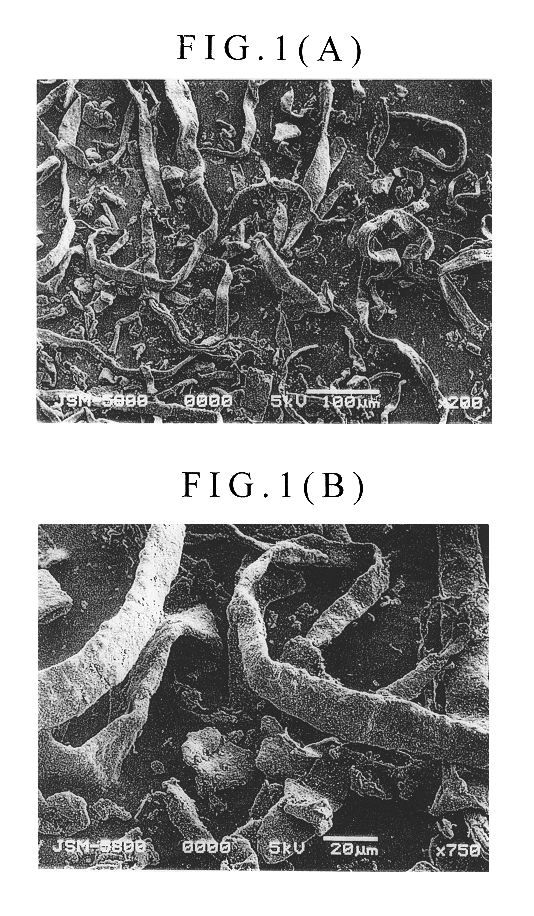Photocatalytic pulp composition
a technology of photocatalysis and pulp, applied in the field of photocatalysis pulp composition, can solve the problems of remarkably late completion of the reaction, slow reaction rate, and difficult curing
- Summary
- Abstract
- Description
- Claims
- Application Information
AI Technical Summary
Benefits of technology
Problems solved by technology
Method used
Image
Examples
example 4
The photocatalytic pulp composition obtained in Example 2 and a wastepaper of newspaper were made into a paper as in Example 1.
Beater treatment time: 1 hour
Concentration of photocatalytic pulp: 8 wt %
Concentration of a wastepaper of newspaper pulp: 8 wt %
Basis weight: Total 60 g / m.sup.2
Photocatalytic pulp layer: 50 g / m.sup.2
Newspaper wastepaper pulp layer: 10 g / m.sup.2
[Photocatalytic Pulp+Paper; Comparative Example 1]
Paper fibers 2 kg (80 wt %) and titanium oxide 0.5 kg (20 wt %) were diluted to the pulp concentration of 8 wt % with a beater without using a mixer in the above embodiment and Example, to make a paper. Basis weight: Total 50 g / m.sup.2
The test results of the above Test Examples 1 and 2 and Comparative Example 1 are shown below.
Test conditions:
Concentration of added acetaldehyde: about 820 ppm
Light intensity: about 1 mW / cm.sup.2
Reaction vessel: 1 liter
Photocatalytic Pulp Composition and other Comparative Example
Sample size: 8.times.8 cm
Thickness: 0.25 mm
The photocatalyti...
example 6
The molded press sheet of the aforementioned Example 5 and a wastepaper pulp comprising a wastepaper of newspaper after a DIP step (deinking treatment) were made into a paper to dry. The basis weight 10 g / m.sup.2 was laminated on one side via an adhesive with a hot press, which was used as a sample (Example 6).
Beater treatment time: 1 hour
Concentration of photocatalytic pulp: 8 wt %
The photocatalytic pulp was not treated with a beater.
Basis weight: Total 60 g / m.sup.2
Photocatalytic pulp layer: 50 g / m.sup.2
Newspaper wastepaper pulp layer: 10 g / m.sup.2
[Comparative Example 2 (The Aforementioned Photocatalytic Pulp Paper; Test Example 2)]
Paper fiber: 2 kg (80 wt %) water content: 10 wt %
Titanium oxide: 0.5 kg (20 wt %)
Water content after treatment: 0.6 wt %
The photocatalytic pulp composition obtained in the aforementioned Example 2 was used and made into a paper according to the same step as that of manual Japanese paper step (Unfoamed: the aforementioned Test Example 2).
500 ml of water ...
PUM
| Property | Measurement | Unit |
|---|---|---|
| length | aaaaa | aaaaa |
| diameter | aaaaa | aaaaa |
| melting point | aaaaa | aaaaa |
Abstract
Description
Claims
Application Information
 Login to View More
Login to View More - R&D
- Intellectual Property
- Life Sciences
- Materials
- Tech Scout
- Unparalleled Data Quality
- Higher Quality Content
- 60% Fewer Hallucinations
Browse by: Latest US Patents, China's latest patents, Technical Efficacy Thesaurus, Application Domain, Technology Topic, Popular Technical Reports.
© 2025 PatSnap. All rights reserved.Legal|Privacy policy|Modern Slavery Act Transparency Statement|Sitemap|About US| Contact US: help@patsnap.com



